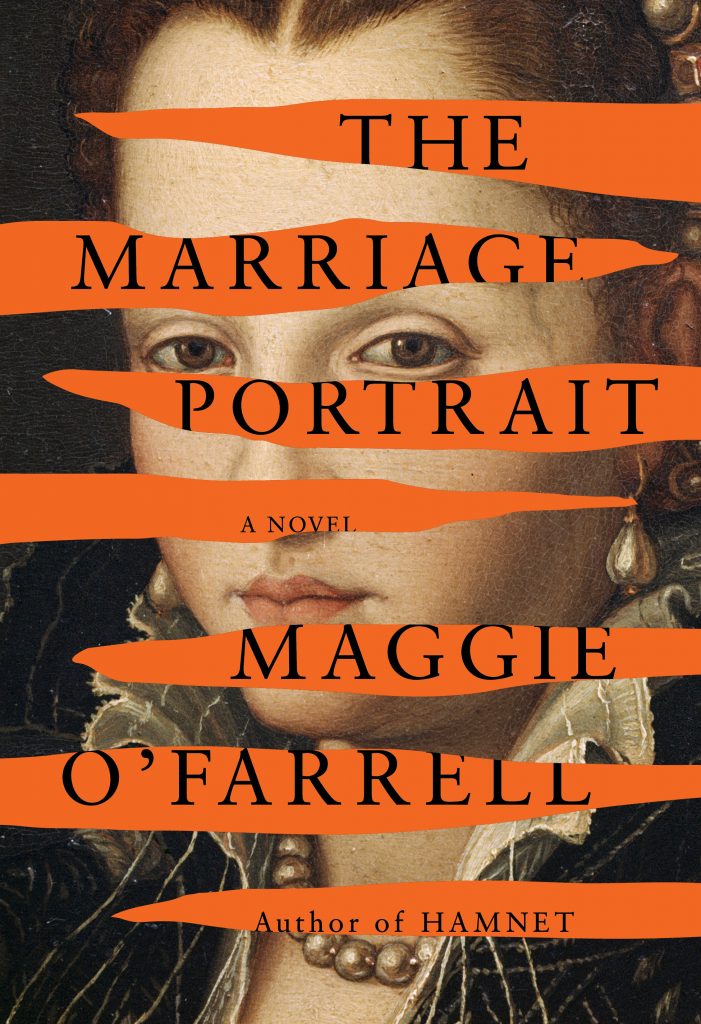From the opening lines of The Marriage Portrait, author Maggie O’Farrell does not hedge: The Duchess of Ferrara will die. As historical fiction based on the real life and death of the 16-year-old Lucrezia di Cosimo de’Medici—the details were set in stone more than 460 years ago—this new novel probes the who and the how through a vibrant exploration of passion and fate.
Woven between sections describing the hours leading up to the Duchess’ death in Fortezza are lush and melodic stretches that detail Lucrezia’s childhood in Florence and eventually follow her as she is condemned to marry the Duke of Ferrara, Alfonso II de’Este, and move to Ferrara to live with his family and provide an heir. Lucrezia is utterly singular for much of her life, an odd child in her father’s court and a naive, young wife once in her husband’s unfamiliar world. As the two timelines converge and death draws near, O’Farrell succeeds in creating a striking portrait of a spirited young woman, as untamed in her desire to live as she is in her appreciation of the world in painterly detail.
O’Farrell is the author of other acclaimed novels, a memoir, and even two books for young readers. But she is perhaps best known for Hamnet, the 2020 historical novel about Shakespeare’s son and the nature of grief, which won her the Women’s Prize for Fiction and the National Book Critics Circle Award for Fiction, among other accolades.

A pivotal moment in The Marriage Portrait occurs in Lucrezia’s childhood, after her father purchases a tigress to add to his menagerie housed in the Sala dei Leoni of their castello in Florence. Upon surreptitiously witnessing the animal’s arrival in the dead of night, young Lucrezia later visits her cage and experiences a transcendent moment of connection with the exquisite beast, a moment in time that proves to have a lasting impact on her life and reputation. “Her life, her name, her family and all that surrounded her receded and became void. She was aware only of her own heart, and that of the tigress.”
The themes of bestial prowess and fecundity that run throughout the novel are seen most vividly in Lucrezia’s obsession with the tigress as well as other animals’ majesty, pulsing with the threat of savagery while mirroring her own feelings of imprisonment. Though trapped in the gender politics of Renaissance Italy—where high-born women are only to marry and give birth while men are born to rule—Lucrezia is steadfast in her sense of self. When challenged, she is certain that her spirit “might uncurl, crawl out into the light, blinking, bristling, furling its filthy fists and opening its jagged red mouth.”
Unlike the other women in the high courts where she spends her time, Lucrezia defies the expectations of family and tradition, again and again. Even when faced with the certainty of her death, she pokes fun at the performance of social graces: “Her husband, who means to kill her, either by his own hand or by his order to another, takes up the end of his napkin and dabs at his cheek with its pointed corner, as if a spot of soup on one’s face is a matter of importance.”
As a result, the only authentic relationships Lucrezia seems to have are the bonds with the servants in her life, pointing to the alienation that she feels from her own ruling class. Her maid, Emilia, in many ways saves her, offering a connection to her childhood, her true self, and a nurturing that she rarely received since she left the care of her nursemaid, Sofia, from whom she learned a Neapolitan dialect as a secret language that endures into adulthood. In the care she receives from Emilia and Sofia, Lucrezia experiences rare moments of real love and affection. This is also true in her connection with Jacopo, a painter apprenticed to the master Il Bastianino, who is commissioned to paint the eponymous marriage portrait. When completed, Lucrezia sees as “another self, a former self … a self who, when she is dead and buried in her tomb, will endure, will outlive her, who will always be smiling from the wall, one hand poised to begin painting.”
In the end, the Duchess is entombed in the portrait but freed by her own painting, which she began to practice as a child and continued to use as a creative outlet and coping mechanism. Her small artworks are thick with underpaintings that depict hidden desires and other lives expressed only when she is alone, before being covered up again by more acceptable paintings of animals and plants. Despite also being used against her by the tempestuous and vindictive Alfonso, Lucrezia’s artwork, her vivid appreciation of the natural world, and even an appreciation for her own animal body, all provide her with enduring strength. Indeed, at its heart, this is a sensuous novel about the ways that art and language might save us, even when all seems lost.
